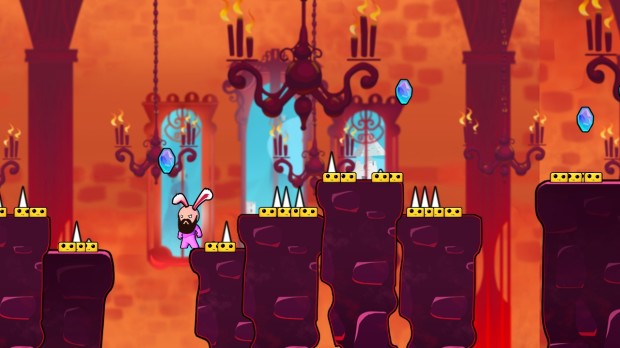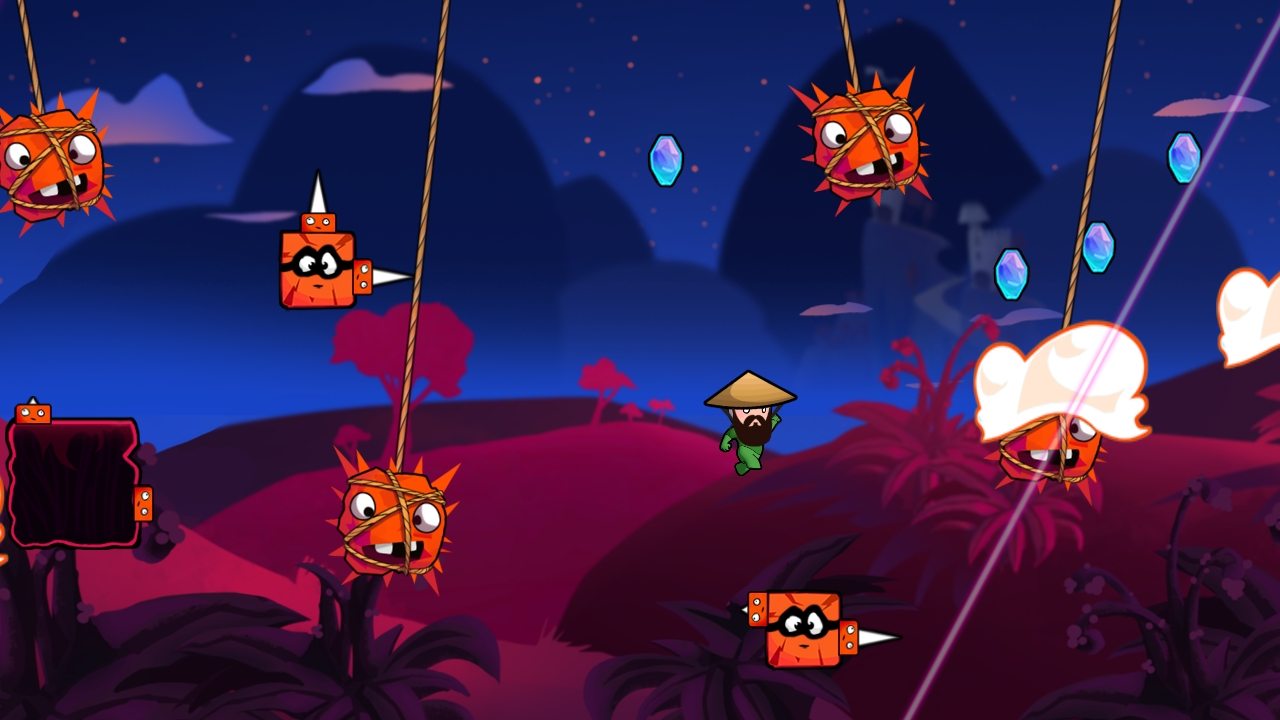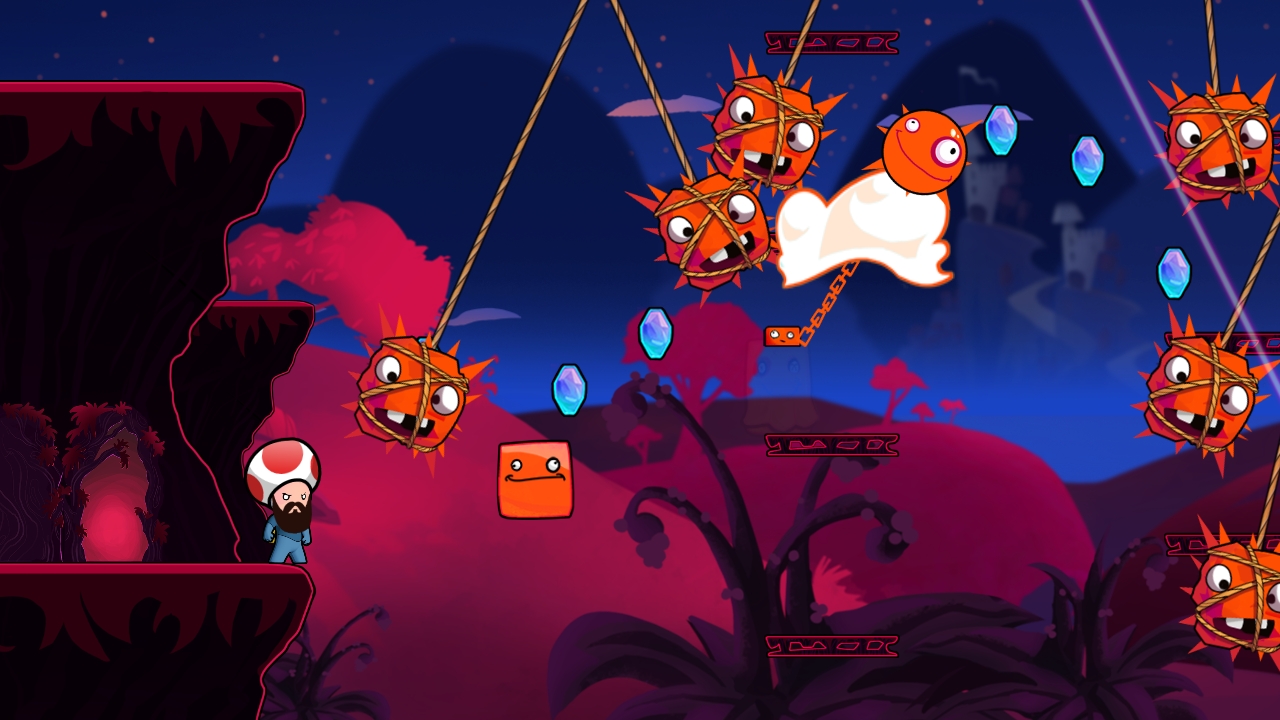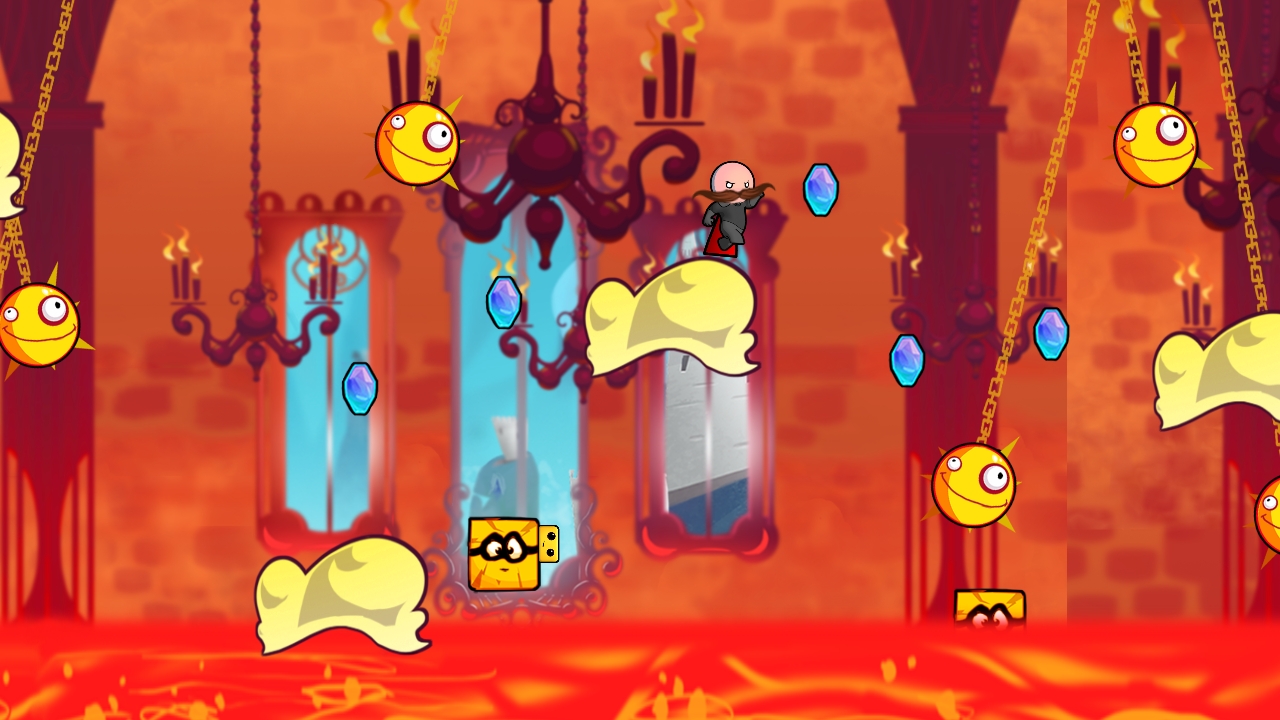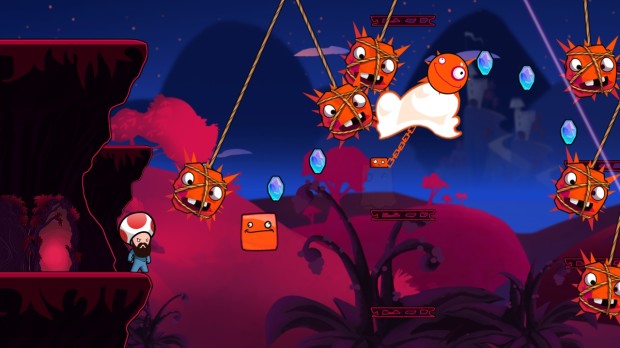Cloudberry Kingdom Review (PS3)
This game was reviewed on the PlayStation 3
It’s pretty gross, but some games are best labelled as ‘palm sweaters’. Put the controller down after a play session and your hands are as clammy as they were on that first date in high school, and the controller itself is coated in a thin film of hand-spawned moisture. Cloudberry Kingdom, a recent release developed by Pwnee Studios and published by Ubisoft, is such a game. It’s a 2D platformer that relies on incredibly simple controls, yet ramps up the difficulty to such an extent that much of your time playing it will be spent in a Zen-like subconscious trance, as you zone in to its high-speed jumping and dodging mechanics. With an adorable aesthetic that belies the true difficulty that lies within, does Cloudberry Kingdom deserve a place in your hardcore games collection?
Cloudberry Kingdom boils the platforming genre down to its most basic elements. Starting from the left of the screen, players run and jump their way across various environments, dodging enemies and traps, and trying their hardest not to fall to their deaths in the gaps between the platforms. The inputs are equally simple, with directional controls and X to jump, although there is the possibility to spend some of your acquired coins on hints, by pressing the Triangle button. These hints include the computer showing you how to get past a particular section of the level, and even a complete guide for the entire level that you’re currently on.
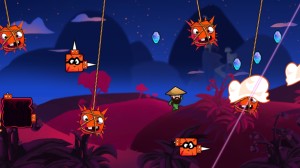 Though Cloudberry Kingdom does feature a Story Mode, it’s clear from the start that the main focus of the game are the Arcade offerings, which include Escalation, Time Crisis, Hero Rush, and Hybrid Rush. Escalation is available from the start, and is fairly self-explanatory: the levels get increasingly difficult as you progress. Time Crisis starts the player off with 15 seconds on the clock, and collecting coins adds further seconds to the timer, which continues from level to level until the timer runs out entirely. Hero Rush is similar to Time Crisis, yet the abilities that your character possesses change from level to level. Lastly, Hybrid Rush is the same as Hero Rush, but often with one or more abilities to juggle at once. Each of these modes is unlocked depending on how many levels you’ve cumulatively finished within the Arcade mode, with Time Crisis unlocking after 50 levels, and Hybrid Rush available to play after hitting the 250 level mark.
Though Cloudberry Kingdom does feature a Story Mode, it’s clear from the start that the main focus of the game are the Arcade offerings, which include Escalation, Time Crisis, Hero Rush, and Hybrid Rush. Escalation is available from the start, and is fairly self-explanatory: the levels get increasingly difficult as you progress. Time Crisis starts the player off with 15 seconds on the clock, and collecting coins adds further seconds to the timer, which continues from level to level until the timer runs out entirely. Hero Rush is similar to Time Crisis, yet the abilities that your character possesses change from level to level. Lastly, Hybrid Rush is the same as Hero Rush, but often with one or more abilities to juggle at once. Each of these modes is unlocked depending on how many levels you’ve cumulatively finished within the Arcade mode, with Time Crisis unlocking after 50 levels, and Hybrid Rush available to play after hitting the 250 level mark.
What’s admirable about Cloudberry Kingdom is the customization options that you are afforded to mix up your character with. For example, my hero was decked out in a top hat, monocle and cape, with a giant walrus-like moustache for a full English gentleman effect. With the game being able to support up to four players simultaneously, the number of customisation options go a long way to ensuring that you won’t get mixed up between which on-screen character is yours, and which is someone else’s. What’s more, as you progress through the various levels in the Arcade Mode, you unlock different abilities for your hero to use, such as a jetpack, bouncy carousel horse, and even a spaceship, which changes the gameplay into an R-Type-esque side-scroller. Similarly to the modes themselves, these abilities are unlocked by reaching certain levels, and even by using particular abilities to reach those levels, which ensures that utilising each and every one of the potential abilities is well rewarded.
Frankly, having experienced much that the Arcade Mode has to offer, I was a little disappointed by the Story Mode, although that may not be too surprising considering the arcade-like nature of Cloudberry Kingdom. The story is pretty straightforward, with our hero, Bob, attempting to rescue a princess from the evil King Kobbler. Perhaps the most disappointing aspect of the story mode, though, was within the cutscene that opens the narrative. Considering how charmingly the visuals in the rest of Cloudberry Kingdom are presented, the cutscene is quite ugly, with its paper craft effects coming across as cheap, and reminiscent of the kind of kid’s TV show that would give you nightmares if you happened to turn the TV on early enough on a Saturday morning to catch the freaky foreign-made children’s shows. The gameplay itself is fairly similar to what’s on offer in Arcade Mode, with Bob working his way across seven different chapters, each one representing a particular visual theme.
The range of environments within Cloudberry Kingdom is one of the reasons why the game looks so charming, and goes a long way to keeping the game feeling fresh, even as you’re repeating the same actions on each level. Most environments only stick around for three or four levels, but do start to get recycled as you progress further into the game. However, their distinct looks and unique colour schemes do more than enough to keep your eyes occupied, even if you’re not consciously looking at them as the difficult starts to ramp up. Perhaps the best comparison that can be made is with Rock Band or Guitar Hero, where you’re so focused on which notes are coming up that you’re almost completely unaware that there’s a recreation of an entire concert going on behind them. Once you reach that point in Cloudberry Kingdom, it almost feels as if the game is inside your head, and god forbid anyone attempting to get more than a grunt out of you if they try to engage you in conversation once you reach that state.
Despite the relatively simple presentation and gameplay that’s on offer within Cloudberry Kingdom, it suffers from one particular issue that is near fatal when dealing with a twitch-based platformer such as this: the game’s hit detection is noticeably inconsistent. On a number of occasions, early into my time with the game, I landed in a position that I was certain would result in my character meeting an untimely death due to a spinning chainsaw. However, the saw passed straight through my character, leaving him entirely unharmed. On later occasions, when the same incident repeated itself, it was an almost 50/50 split as to whether I would die or not. Though dying within the game isn’t the end of the world (as lives are fairly easy to come by, and checkpoints are never too far away) when you’re operating at the speed that Cloudberry Kingdom asks of you, consistency is crucial when it comes to the question of whether or not landing in a certain spot will kill you.
Cloudberry Kingdom is a game that, if you let it, will get inside your head, and almost becomes gaming in its purest form, with nary a hint of conscious button input creeping into your play. What’s more, its charming looks disguises the level of difficulty, which, while never reaching controller-breaking levels, is certainly enough to warrant a couple of swear words. With plenty of customisation options, a number of well-earned unlockables, and enough of an addictiveness level to encourage you to try just one more go, Cloudberry Kingdom can easily turn a short gaming session into a multi-hour marathon without you realising. Though it may look like a kid’s game based on the graphics alone, Cloudberry Kingdom is deserving of your respect, and is well worth a play.
About This Post
